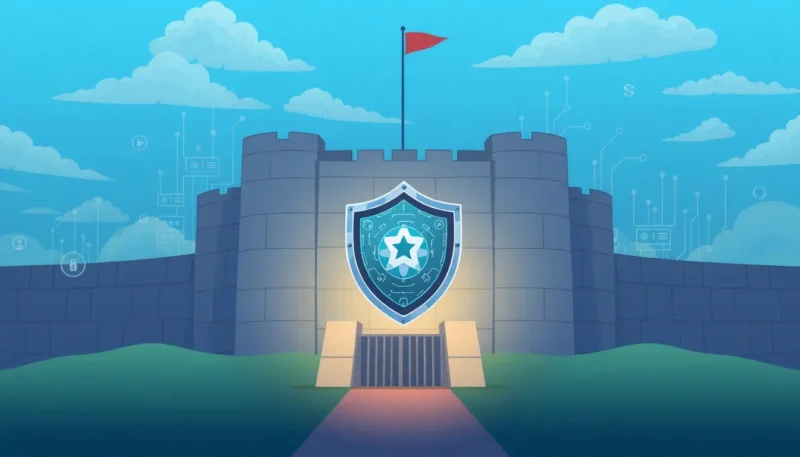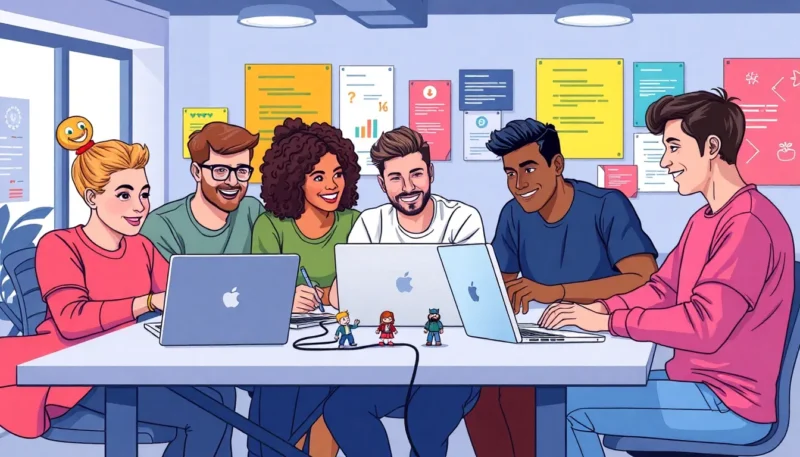

In a world that runs on virtual teams and cloud-based collaboration, the real challenge in software development isn’t just writing perfect code — it’s building perfect communication. The most innovative products aren’t simply born from clean architecture or solid frameworks; they emerge from the quiet, invisible bonds within distributed teams. When a custom .NET development company brings together coders across continents, time zones, and cultures, success depends as much on psychology as it does on technology.
The Human Side of Distributed Software Engineering
Software engineering, especially in the .NET universe, has always been about problem-solving. But when teams operate remotely, the “problems” extend beyond syntax errors — they’re deeply human: trust, motivation, identity, attention, and empathy.
The magic happens when developers start to think not only like engineers but like collaborators in a living, breathing ecosystem. The distributed model isn’t just a logistical setup; it’s a psychological experiment in shared cognition. Every Zoom call, every Git commit, every asynchronous comment builds a mental map of collective understanding.
Understanding the Psychology Behind Effective Remote Teams
Psychologists often say that teams are microcosms of social systems. In remote development, that statement becomes literal. You’re dealing with cognitive load, communication biases, and cultural differences that subtly shape every sprint. Let’s break down the core psychological elements that define whether a distributed .NET development team thrives — or silently falls apart.
1. Trust: The Invisible Framework
Trust is the runtime environment of teamwork. Without it, even the most elegant .NET code collapses under interpersonal friction. In a remote environment, trust isn’t built over coffee breaks — it’s built through consistency. A developer who updates tasks regularly, answers questions with clarity, and admits mistakes quickly becomes the human equivalent of reliable middleware.
Studies show that trust correlates with project velocity more than technical proficiency. In distributed teams, predictability beats perfection. Developers who keep their promises and communicate openly reinforce a sense of collective safety — a psychological space where innovation can thrive.
2. Empathy: The Unsung Architecture
Empathy may sound soft, but in reality, it’s the hardest architecture to scale. It requires conscious design. Leaders of remote .NET development services must model empathy by showing curiosity about their teammates’ working habits, cultural norms, and even small emotional cues hidden in chat messages.

When empathy is systematized — say, through asynchronous check-ins, retrospectives, or shared mental health breaks — it transforms into a scalable management framework. A team that feels emotionally “seen” tends to outperform even highly technical groups with no emotional cohesion.
3. Cognitive Diversity: The Engine of Innovation
In software engineering, cognitive diversity — the mix of analytical, creative, and intuitive thinking — is a force multiplier. The most productive remote teams are built like balanced ecosystems: architects who think in abstractions, backend developers who love structure, and frontenders who think visually.
A custom .NET development company thrives when it fosters cross-pollination. When a QA engineer in Warsaw challenges the logic of a developer in Lisbon, or a UX designer in Munich rethinks an API flow — that’s not friction. That’s innovation happening in real time.
4. Autonomy: The Quiet Driver of Productivity
Autonomy is often misunderstood as independence. In distributed .NET teams, it’s actually alignment. It means that every developer knows what success looks like without being micromanaged.
Remote collaboration tools like Azure DevOps, GitHub, and Slack help, but autonomy truly thrives when leadership trusts competence. Developers who own their sprint goals tend to self-organize naturally. The psychological outcome? A feeling of mastery — one of the most powerful intrinsic motivators in human behavior.
The Communication Equation
The code may be compiled in Visual Studio, but teamwork is compiled in conversation. Communication defines the rhythm of distributed work — the difference between “waiting” and “flow.”
1. Asynchronous Mastery
In remote .NET development services, asynchronous communication is both art and survival mechanism. The best teams design communication intentionally: detailed pull request notes, decision logs, and clarity-first messages.
This structured communication reduces cognitive strain and keeps collaboration fluid across time zones. It allows developers in different hemispheres to work as if they share the same clock.
2. The Role of Digital Rituals
Every high-performing distributed team develops its own rituals. Daily stand-ups, “demo Fridays,” virtual coffee rooms — these aren’t just routines, they’re identity anchors. Rituals create rhythm and stability, the two elements most missing in remote work.
In .NET teams, these rituals may take the form of sprint retrospectives where the team celebrates successful deployments or discusses missed deadlines without blame. These moments of reflection act as psychological resets.
3. Cultural Fluency
In global software teams, language barriers are the least of your worries. What really matters are the subtle layers of cultural cognition — how people perceive time, conflict, or feedback.
A German developer might see precision as respect. An American might see it as rigidity. A developer in India may hesitate to contradict a senior engineer, while one in the Netherlands sees debate as teamwork.
Leaders who understand and bridge these gaps turn cultural friction into creative energy.
Leadership in a Remote .NET Environment
Remote leadership isn’t about authority — it’s about amplification. The best leaders act as emotional compilers: they translate uncertainty into direction and silence into dialogue.
1. Emotional Transparency
When managers openly share their thought processes — why they prioritize certain features, why deadlines move — they humanize the hierarchy. Transparency breeds trust, and trust fuels momentum.
A leader who says “I don’t know, let’s find out” sets a tone of collective intelligence rather than command-and-control.
2. Psychological Safety
This concept, popularized by Harvard researcher Amy Edmondson, is the bedrock of high-performing teams. It’s the belief that no one will be punished for taking a risk or admitting a mistake.
In a custom .NET development company, psychological safety means developers can experiment with new libraries or refactor critical code without fear of backlash. That freedom to fail fast and fix faster creates long-term resilience.
3. Mentorship as Culture
Mentorship in remote .NET teams isn’t a side project — it’s infrastructure. Pair programming, internal tech talks, and code reviews are mentorship in disguise.
A company that systemizes mentorship creates a continuous flow of learning and empathy. Every pull request becomes a classroom, every sprint a shared learning journey.
The Hidden Costs of Misaligned Teams
When remote teamwork fails, it doesn’t happen loudly. It happens in silence — delayed responses, passive resistance, and invisible burnout.
Distributed teams can quietly decay if leaders focus only on deliverables and ignore emotional bandwidth. Burnout isn’t always about long hours; it’s often about lack of recognition, unclear expectations, or social disconnection.
A truly human-centric custom .NET development company treats these warning signs like system errors — not as employee flaws, but as signals for optimization.
The Technology That Enables Human Connection
Ironically, the same tools that risk alienating people — messaging apps, dashboards, bots — can also deepen connection when used thoughtfully.
1. Digital Workspaces as Cognitive Extensions
Well-designed collaboration environments reduce mental load. A project space that clearly defines ownership, tasks, and dependencies becomes a shared mental model. It keeps everyone’s working memory aligned — the essence of teamwork in cognitive science.
2. Automation as Empathy
Automating repetitive tasks isn’t just about saving time. It’s about preserving creative energy. When developers don’t have to chase approvals or manually test code, they can focus on what humans do best — solving complex problems creatively.
3. AI Assistants and Cognitive Augmentation
Emerging AI copilots in .NET development environments are transforming how teams collaborate. They serve as equalizers — helping junior developers navigate complex codebases and freeing senior ones from routine reviews.
But they also require emotional intelligence from leaders: knowing when to rely on AI, and when to listen to a human.
Choosing the Right Partner: The Psychology of Alignment
Technical expertise is measurable — portfolio, certifications, frameworks. But psychological alignment? That’s subtler. When you hire .NET developers for your project, you’re not just hiring coders; you’re inviting collaborators into your cognitive space.
Look for teams that:
- Communicate like humans, not tickets. They understand your goals, not just your specs.
- Show empathy in their process. They listen before proposing solutions.
- Adapt culturally. They can mirror your communication rhythm.
- Value transparency. They’re comfortable saying “we don’t know yet.”
In other words, they don’t just build apps — they build understanding.
The Cognitive Architecture of Collaboration
If traditional project management focuses on scope, budget, and deadlines, modern remote .NET collaboration focuses on cognition: how people think, remember, and synchronize their attention.
1. Shared Mental Models
Teams perform best when they share an implicit understanding of goals, workflows, and challenges. This shared cognition minimizes the need for constant coordination.
2. Distributed Attention
In a remote .NET project, attention is the new currency. Smart leaders design workflows that reduce unnecessary interruptions, allowing developers to stay in flow states. Deep work isn’t a luxury — it’s the core of velocity.
3. Feedback Loops
Frequent, lightweight feedback sustains engagement. Whether through code reviews or quick retros, it maintains a rhythm of learning that keeps the team psychologically agile.
From Code Factories to Human Ecosystems
The outsourcing industry is evolving. The old model — “you send specs, we send code” — no longer works. Today, clients seek co-creation, shared accountability, and emotional resonance.
A custom .NET development company that understands psychology becomes more than a vendor. It becomes a thinking partner — one that codes empathy into architecture and turns human alignment into technical velocity.
Because the future of remote work isn’t just digital — it’s emotional. And the best .NET teams aren’t those with the most advanced tools. They’re the ones that understand the deepest truth of software engineering: before you build the system, you build the team.
Conclusion: Code Connects Machines — Empathy Connects People
Great software is never just a sum of technologies. It’s a living reflection of how humans collaborate, trust, and think together. In the world of remote .NET development services, this human layer defines success.
When communication feels natural, when leadership inspires rather than dictates, and when every developer feels psychologically safe to challenge ideas — that’s when innovation becomes unstoppable.
The psychology of teamwork is the hidden framework behind the world’s most resilient digital ecosystems. And as the lines between human and machine blur, it’s that framework — not just code — that will shape the software of tomorrow.











